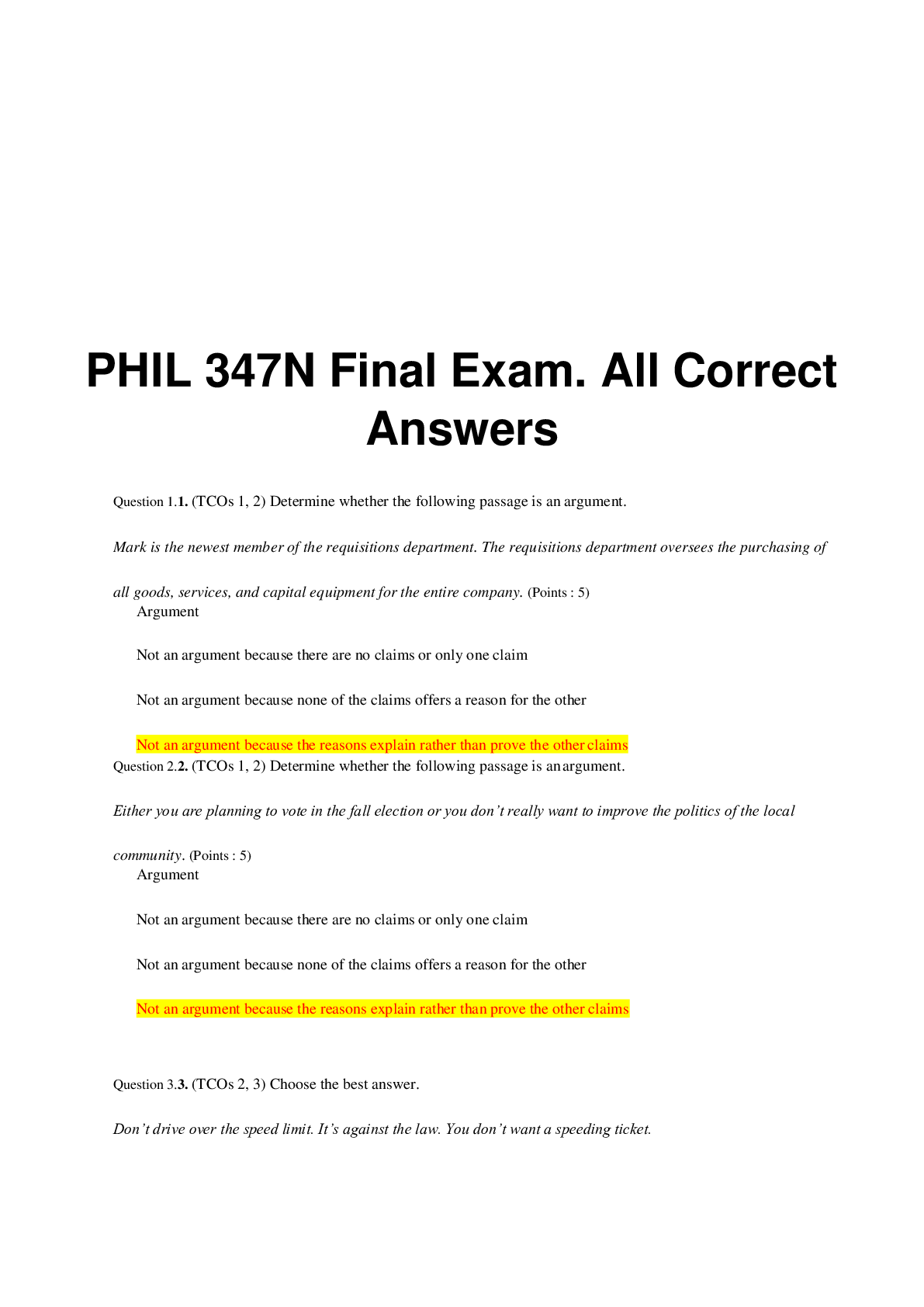Finance > QUESTIONS & ANSWERS > Test-Bank-for-Financial-Accounting-for-MBAs-4th-Edition-by-Easton (All)
Test-Bank-for-Financial-Accounting-for-MBAs-4th-Edition-by-Easton
Document Content and Description Below
Financial Accounting for MBAs Learning Objectives – coverage by question True/ False Multiple Choice Exercises Problems Essay Questions LO1 Identify and discuss the users and suppliers of ... financial statement information. 1-4 1-2 - 1 1-2 LO2 Identify and explain the four financial statements, and define the accounting equation. 5-10 3-19 1-8 2-5 3 LO3 Explain and apply the basics of profitability analysis. 11-13 20-25 9-10 6-7 4 LO4 Describe business analysis within the context of a competitive environment. 14 26-27 - 8 - LO5 Describe the accounting principles and regulations that frame financial statements. 15 28-30 - 9-10 5 Module 1: Financial Accounting for MBAs True/False Topic: Users of Financial Statement Information LO: 1 1. Shareholders demand financial information primarily to assess profitability and risk whereas bankers demand information primarily to assess cash flows to repay loan interest and principle. Answer: True Rationale: While both shareholders and bankers are interested in all the information company’s provide, shareholders care about more about a company’s profitability and bankers care more about solvency and creditworthiness. Topic: Publicly available financial reports LO: 1 2. Publicly traded companies are required to provide quarterly financial reports directly to the public. Answer: False Rationale: Companies provide electronic versions of quarterly financial statements to the SEC that posts them to the internet for the public to access them. Topic: Users of Financial Statement Information LO: 1 3. Publicly traded companies provide financial information primarily to satisfy the SEC and the tax authorities (that is, the Internal Revenue Service). Answer: False Rationale: Demand for information extends to many users, the regulators such as the SEC and the IRS are only one class of users. Topic: SEC filings LO: 1 4. Publicly traded companies must provide to the Securities Exchange Commission annual audited financial statements (10K reports) and quarterly audited financial statements (10Q reports). Answer: False Rationale: Quarterly reports do not need to be audited. Topic: Balance Sheet LO: 2 5. If a company reports retained earnings of $175.3 million on its balance sheet, it must also report $175.3 million in cash. Answer: False Rationale: The accounting equation requires total assets to equal total liabilities plus stockholders’ equity. That does not imply, however, that liability and equity accounts relate directly to specific assets. Topic: Balance Sheet LO: 2 6. A balance sheet shows a company’s position over a period of time, whereas an income statement, statement of stockholders’ equity, and statement of cash flows show its position at a point in time. Answer: False Rationale: The statement is reversed: A balance sheet shows a company’s position at a point in time, whereas an income statement, statement of equity, and statement of cash flows show its position over a period of time. Topic: Accounting Equation L: O2 7. Assets must always equal liabilities plus equity. Answer: True Rationale: The accounting equation is Assets = Liabilities + Equity. This relation must always hold. Topic: Income Statement LO: 2 8. The income statement reports net income which is defined as the company’s profit after all expenses and dividends have been paid. Answer: False Rationale: The statement contains two errors. First, net income does not include any dividends during the period; these are a distribution of profits and not part of its calculation. Second, the income statement is prepared on an accrual basis and thus includes expenses incurred (as opposed to paid). Topic: Statement of Cash Flows LO: 2 9. A statement of cash flows reports on cash flows for operating, investing and financing activities at a point in time. Answer: False Rationale: A statement of cash flows reports on cash flows for operating, investing, and financing activities over a period of time. Topic: Statement of Stockholders’ Equity LO: 2 10. An increase in treasury stock would be reflected in the statement of stockholders’ equity. Answer: True Rationale: The statement of stockholders’ equity reports on changes in the accounts that make up stockholders’ equity. This includes contributed capital, retained earnings, and treasury stock. Topic: Return on Assets LO: 3 11. Return on Assets (ROA) measures the profit the company makes on each dollar of total assets it uses. Answer: True Rationale: Return on Assets profitability metric that measures how much profit the company made for each dollar of assets the company holds on average during the year. Topic: Return on Assets LO: 3 12. Return on Assets (ROA) = Net Income / Sales × Asset Turnover Answer: True Rationale: Return on Assets = Net income / Average Assets. The disaggregation of the ROA into its components Topic: Asset Turnover LO: 3 [Show More]
Last updated: 2 years ago
Preview 1 out of 30 pages
 (1).png)
Buy this document to get the full access instantly
Instant Download Access after purchase
Buy NowInstant download
We Accept:

Reviews( 0 )
$7.50
Can't find what you want? Try our AI powered Search
Document information
Connected school, study & course
About the document
Uploaded On
Jan 27, 2023
Number of pages
30
Written in
Additional information
This document has been written for:
Uploaded
Jan 27, 2023
Downloads
0
Views
50


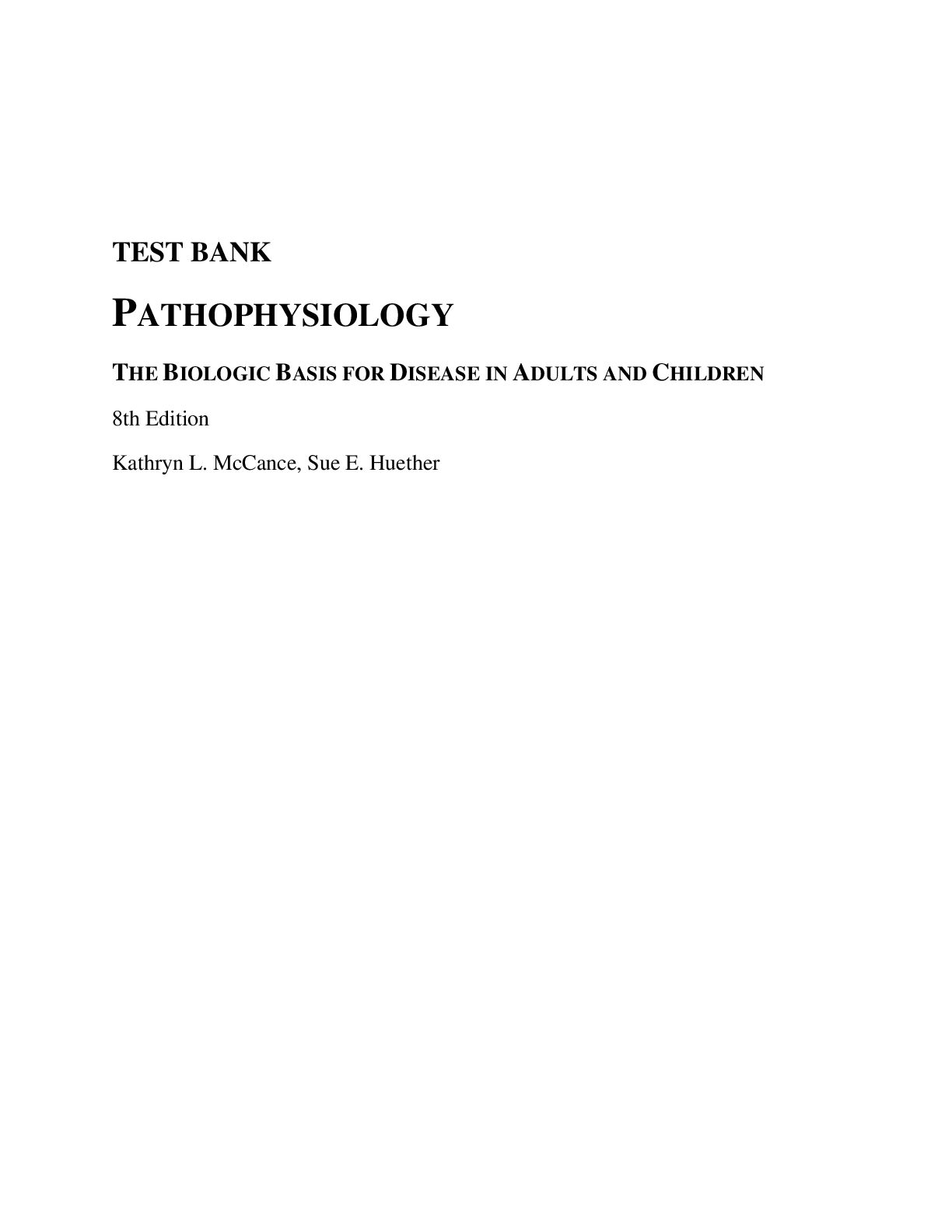


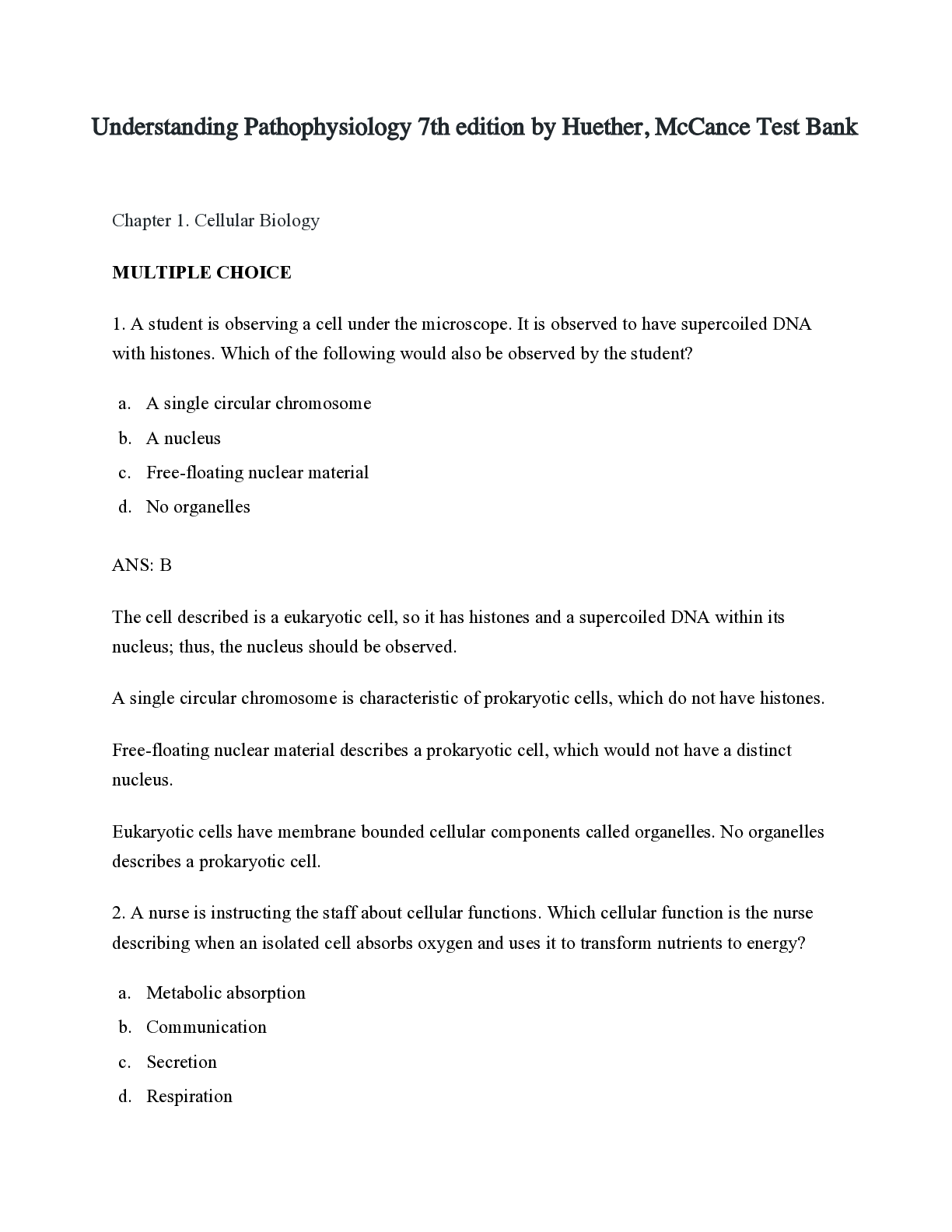
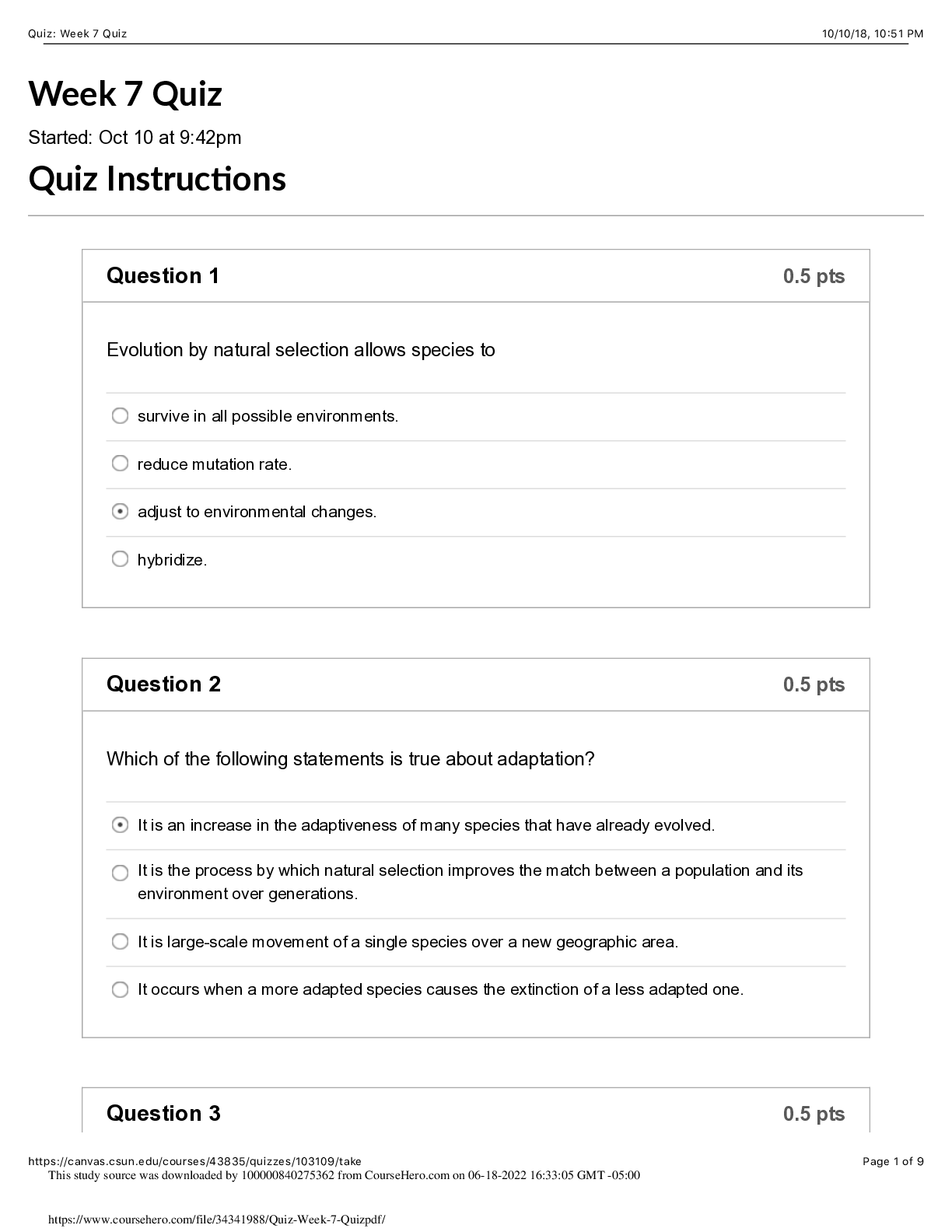
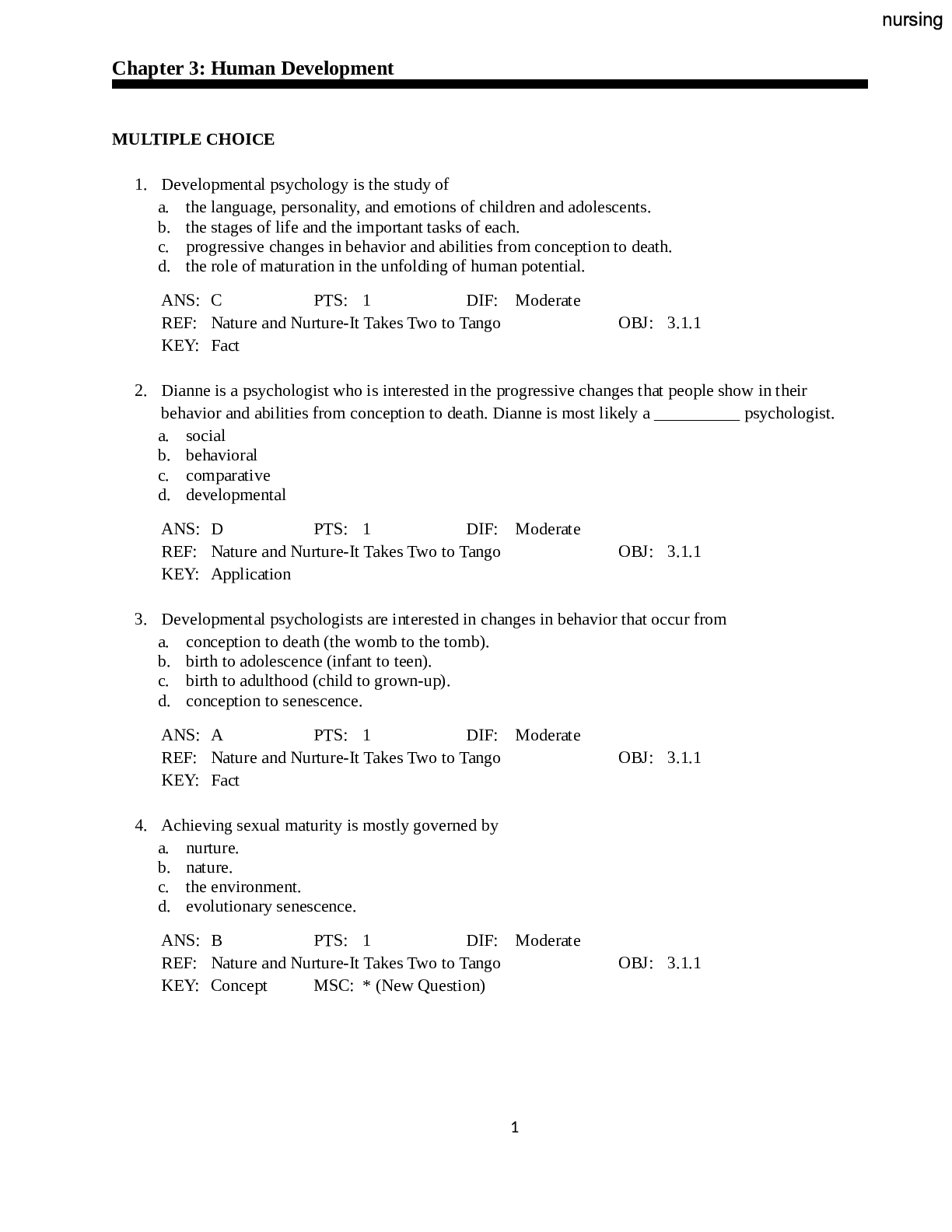

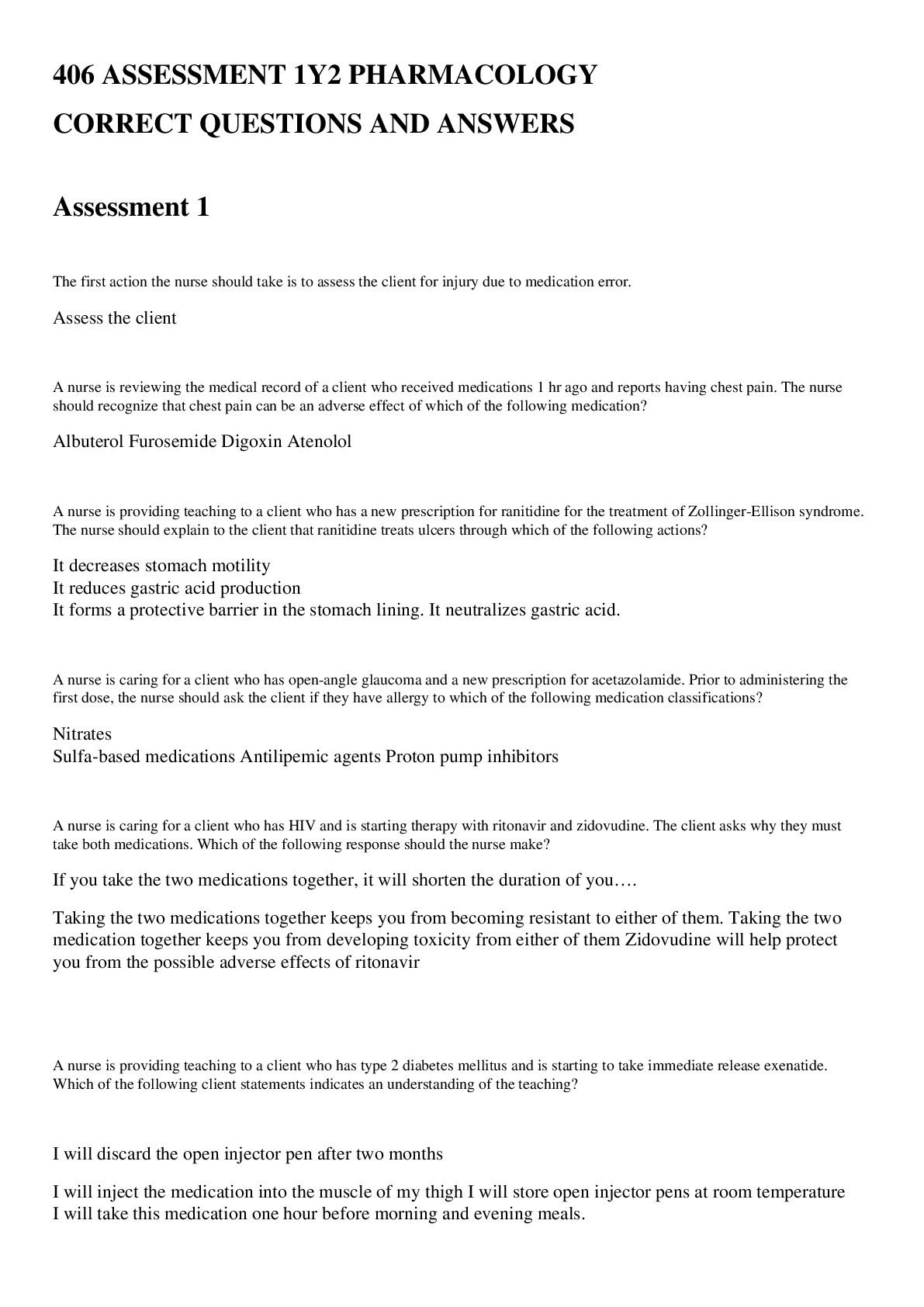
.png)








